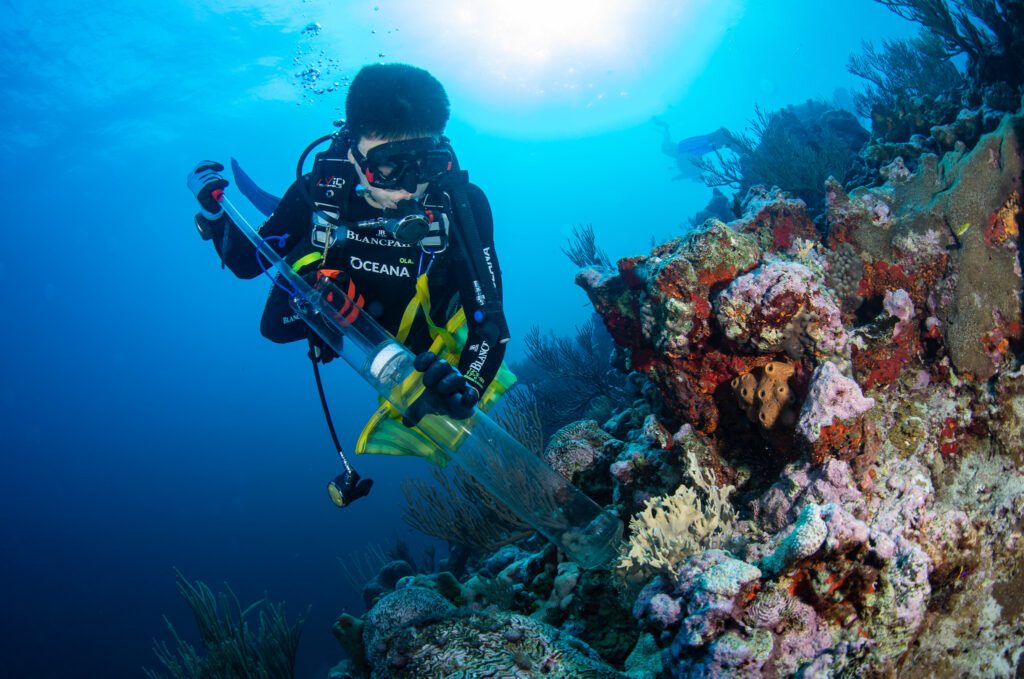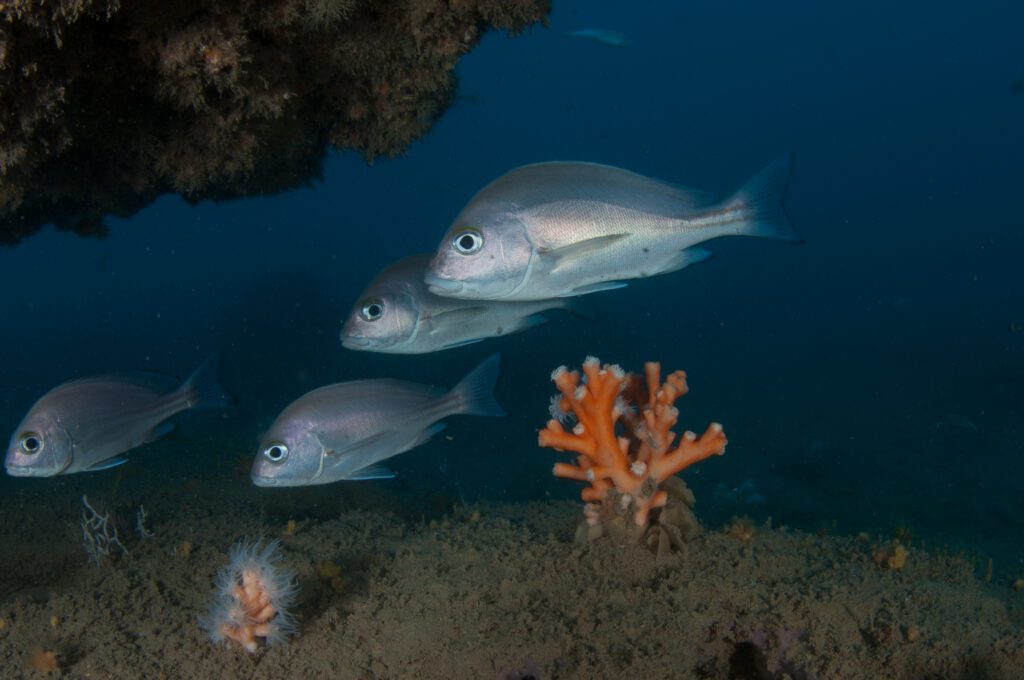January 30, 2024
CEO Note: Progress protecting key ocean habitat
BY: Andy Sharpless
In just the last month, Oceana and our allies have protected several important marine habitats around the world. Marine protected areas (MPAs) can help create a “spillover effect” that boosts fish populations not only inside but also outside of MPAs, which can support local fishers and tourism industries that rely on these plentiful waters for their livelihoods.

A new MPA in Mexico is a case in point for this. Called Bajos del Norte National Park, this MPA covers more than 13,000 square kilometers (5,000+ square miles) in the Gulf of Mexico. Bajos del Norte is home to coral reefs and important commercial species like groupers, octopus, and spiny lobster. Oceana and Blancpain documented this marine life during scientific expeditions to the area in 2021 and 2022. Researchers found the reefs in good condition and with many juvenile fish species, indicating that this is an important breeding area.
Very little scientific research had been done prior to our expeditions here, which made our findings and recommendations a key piece of evidence when justifying the creation of the new MPA.
Oceana researchers also visited the nearby Alacranes Reef National Park. Based on our findings, we recommended Bajos del Norte National Park and Alacranes Reef be connected to form a conservation corridor. This will provide a refuge to threatened species that migrate through the area like sharks and turtles — all while providing support to more than 3,500 fishers.
Our many expeditions to habitats in Spain’s waters also recently proved fruitful. The government designated seven new MPAs in the Atlantic and the Mediterranean including in iconic places like the Canary Island Seamounts, the Ibiza Channel, and the western Strait of Gibraltar. Some of the MPAs were designated exclusively based on Oceana’s data.

The new MPAs, which cover over 90,000 square kilometers (nearly 35,000 square miles), will help protect key ecosystems and fisheries resources and provide climate refuges for species. These areas will increase Spain’s protected waters from 12% to 21%, bringing the country closer to its goal of protecting 30% of its waters by 2030.
Still, MPAs cannot be truly effective without proper management. Oceana is campaigning to ensure these new MPAs are free from destructive fishing methods, like bottom trawling, which can bulldoze the seafloor.
Finally, there is more good news from Chile, where Oceana and our allies campaigned to protect kelp forests — a key ecosystem for marine life and an important resource for more than 16,000 artisanal fishers in Chile.
Currently, kelp, which is used to make processed foods and health/beauty items, is often harvested illegally and there is little official information about its conservation status. The new law will identify proper techniques and tools for kelp collectors. The law also applies to more than 50 commercial resources that live on the seafloor such as sea urchins, crabs, and clams. The law establishes rules to determine which species and areas should be protected and where recovery plans are needed.
This is all welcome and needed progress as we tackle the climate and biodiversity crises. Our work continues and we are moving the needle forward, with our allies, to protect 30% of the oceans by 2030.



